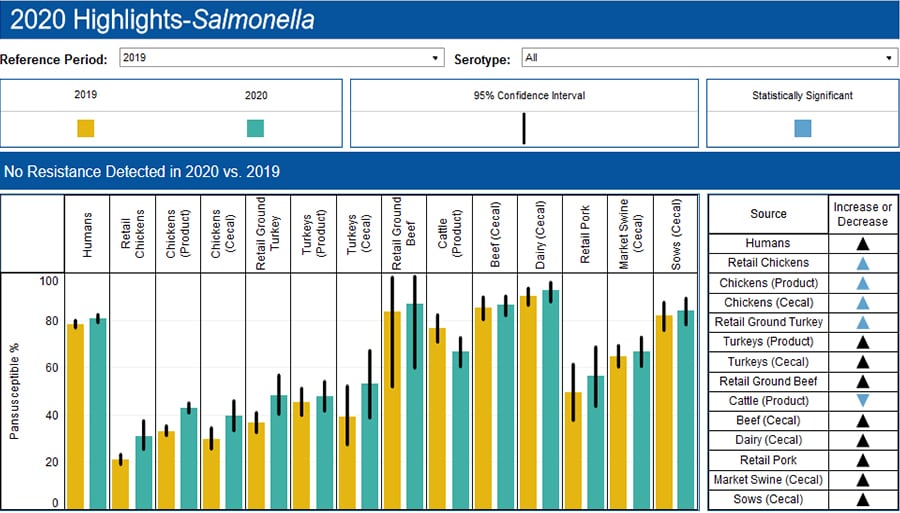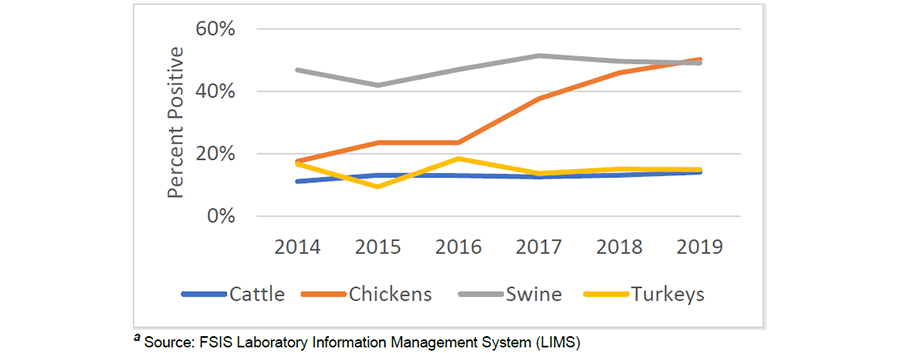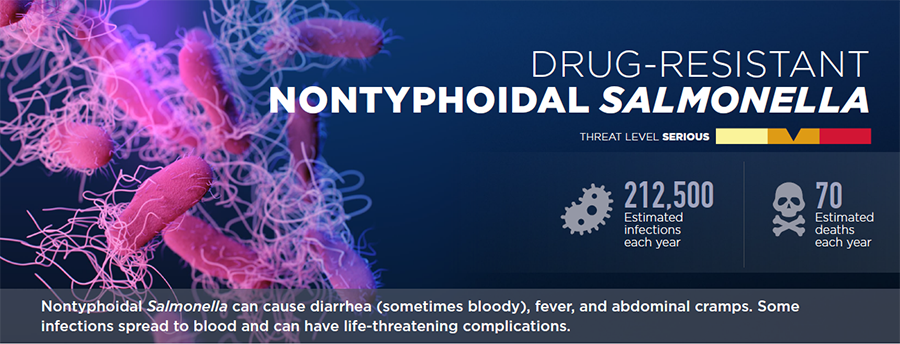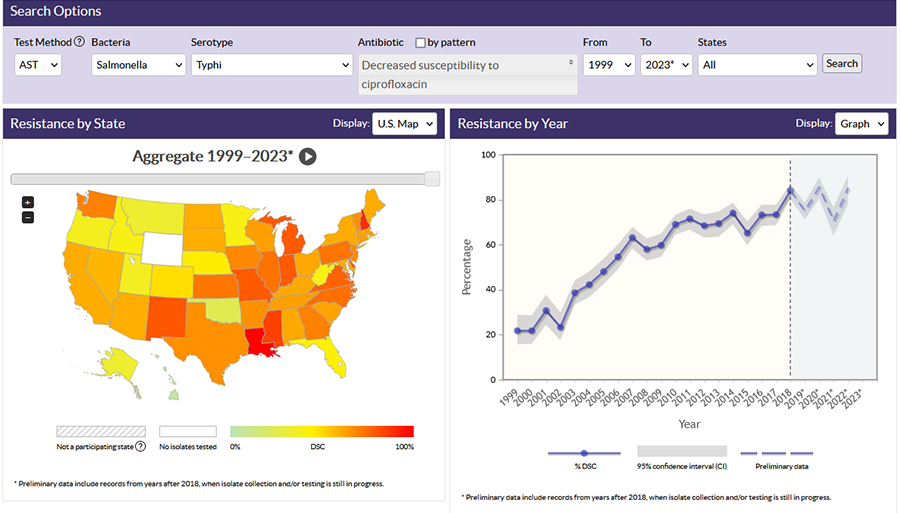Reports and Interactive Data
NARMS reports summarize antimicrobial resistance among enteric bacteria. The reports describe the number and type of isolates collected, their associated antimicrobial resistance, and trends in antimicrobial resistance. This webpage contains NARMS Human Isolates Reports dating back to 1997 and reports from NARMS partners who track antimicrobial resistance in support of food safety.

NARMS Integrated Report
FDA’s latest NARMS Integrated Report represents a consolidated view of the data generated from human clinical isolates, food-producing animal isolates, and isolates from raw meat at retail outlets.

FSIS NARMS Multi-Year Report — 2014–2019
The USDA FSIS NARMS Multi-Year Report evaluates trends in Salmonella serotypes and antimicrobial resistance in certain food animal species and products. This report focuses on antimicrobial resistance trends and emerging threats in Salmonella serotypes of public health concern.

2019 Antibiotic Resistance Threats Report
CDC’s Antibiotic Resistance Threats in the United States, 2019 includes the latest national death and infection estimates for 18 antimicrobial-resistant bacteria and fungi. This report underscores the continued threat of antimicrobial resistance in the U.S., the actions taken to combat this threat, and gaps slowing progress.
For the latest NARMS data, visit NARMS Now.
- 2015
- 2014
- 2013
- 2012
- 2011 [PDF – 71 pages, 1.46 MB]
- 2010 [PDF – 75 pages, 2.69 MB]
- 2009 [PDF – 75 pages, 16.9 MB]
- 2008 [PDF – 73 pages, 1.59 MB]
- 2007 [PDF – 66 pages, 2.75 MB]
- 2006 [PDF – 69 pages, 2.29 MB]
- 2005 [PDF – 78 pages]
- 2004 [PDF – 64 pages, 2.45 MB]
- 2003 [PDF – 67 pages]
- 2002 [PDF – 230 pages, 11.2 MB]
- Human Isolates Final Report 2002 [Word – 1 page]
- 2001 [PDF – 219 pages, 9.85 MB]
- 2000 [PDF – 172 pages, 25.5. MB]
- 1999 [PDF – 127 pages]
- 1998 [PDF – 89 pages, 1.73 MB]
- 1997 [PDF – 56 pages]
